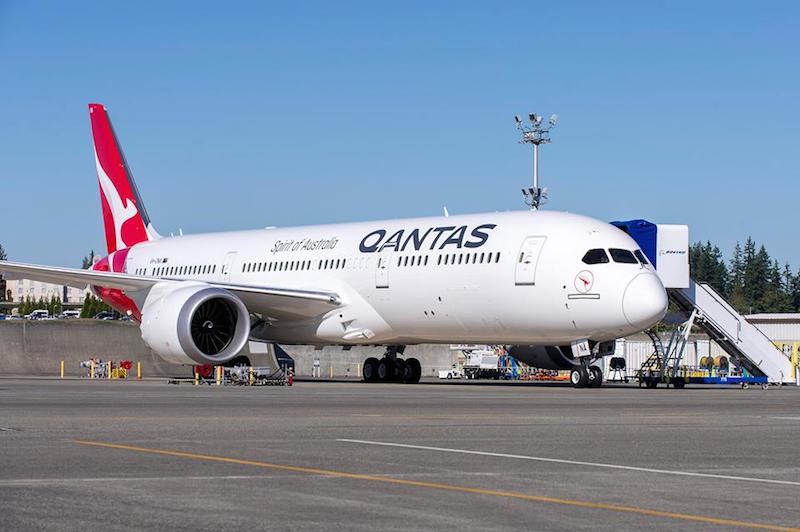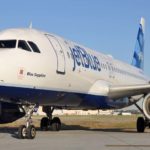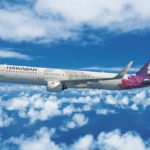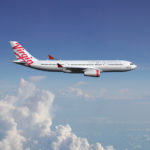
- The Qantas Group announced its earnings figures for the first quarter of financial year 2020.
- Revenue grew 1.8% to USD 4.56 billion vis-à-vis the prior corresponding period. Group Unit Revenue went up 2.1% compared to the prior corresponding period.
- While Group Domestic Unit Revenue dipped 0.9% owing to mixed market conditions, Group International Unit Revenue improved 4.4% because of a reduction in competitor capacity, and benefits of network and fleet changes in Qantas International.
- Corporate travel demand was flat and small business travel demand growth slowed – but the airline’s market share in both these segments continued to grow.
- Jetstar International revenue grew in the quarter, owing to strong demand on leisure routes to Asia that offset weakness in markets impacted by the strength of the United States Dollar.
- “The Group continues to perform well, with strength in key parts of our portfolio helping to offset softness in other areas. Qantas International has seen significant upside from competitor capacity contracting more than anticipated, which is expected to continue for at least the remainder of the first half,” Qantas Group Chief Executive Officer Alan Joyce said.
- Protests in Hong Kong will negatively impact the Group’s first half profit performance by USD 25 million, the airline said. Capacity reduction is being carried out to reduce the second half impact.
- Qantas and American Airlines are introducing improved frequent flyer benefits, including higher earn rates for points and status credits on each other’s networks. Passengers on Australia’s flag airline will also benefit from new codeshares across North America with access to more than 50 new routes and almost 30 new destinations, and American customers will enjoy 32 total codeshare routes in Australia.
PRESS RELEASE
The Qantas Group continued to deliver revenue growth in the first quarter of FY20, up 1.8 per cent to a record $4.56 billion compared with $4.49 billion[1] in the prior corresponding period.
Group Unit Revenue increased 2.1 per cent versus the prior corresponding period.
Total Group capacity was down 0.2 per cent. This was driven by a 0.6 per cent decrease for Group International while Group Domestic increased by 0.5 per cent due largely to growth in the resources market.
SEGMENT UPDATE
Group Domestic Unit Revenue fell by 0.9 per cent due to mixed market conditions. Resources industry traffic continued to strengthen, helping to offset weaker demand in other parts of the corporate sector such as financial services and telecommunications.
Overall, corporate travel demand was flat and small business travel demand growth slowed – but Qantas’ market share in both these segments continued to increase. Premium leisure demand remained steady.
Demand in the price sensitive leisure market weakened. Jetstar’s Unit Revenue fell by 2.6 per cent and accounted for most of the RASK decline in Group Domestic. However, Jetstar did benefit from higher load factors that supported ancillary revenue growth.
Group International Unit Revenue increased by 4.4 per cent. This was led by a reduction in competitor capacity as well as benefits of network and fleet changes in Qantas International, which had its own capacity decrease of 2.5 per cent and a Unit Revenue increase of over 6 per cent.
Protests in Hong Kong will negatively impact the Group’s first half profit performance by $25 million, with ongoing capacity reduction in place to minimise the second half impact.
Jetstar International revenue also grew in the quarter, led by strong demand on leisure routes to Asia that offset weakness in markets impacted by the strength of the US Dollar. Jetstar International grew capacity with increased short haul flying to Bali and the return of aircraft from heavy maintenance compared with the corresponding period.
Further deterioration in global trade conditions has impacted freight demand with an expected profit impact of $25-30 million for the full year.
Qantas Loyalty continued to see strong revenue growth in line with expectations, with improvements to the Frequent Flyer program delivering increased member engagement during the period. New growth-focussed ventures will be announced shortly.
CAPITAL MANAGEMENT UPDATE
A fully franked 13 cent dividend (increased from 12 cents) was paid to shareholders on 23 September 2019, representing a $204 million return.
An off market buyback of up to 79.7 million shares, will shortly commence with the tender period closing on 1 November 2019 and the buy-back to occur on 4 November 2019. This will take returns to shareholders to more than $600m for the half.
FUEL AND OUTLOOK UPDATE
The Group has fully hedged its fuel for FY20 with the ability to benefit from significant price falls. Based on a jet fuel forward market price of A$109 per barrel for the remainder of FY20, the Group’s full year fuel cost is now expected to be $3.98 billion[2] with a $29 million increase in the first half versus the same time last year. The worst case total fuel cost is $4.05 billion[3]
Group capacity is expected to grow by between 0.5 to 1.0 per cent in the first half, with increases in both domestic and international flying.
The Group remains on track to deliver at least $400 million in transformation benefits in FY20, with an increased focus on cost reduction initiatives in the second half.
Recent currency movements will increase non-fuel costs by a further $25 million in the first half.
As at 30 September 2019, bond rate movements due to changes in interest rates since 30 June 2019 would result in an estimated adverse $40 million non-cash impact to the full year Underlying Profit Before Tax[4].
CEO COMMENTARY
Qantas Group CEO Alan Joyce said the record revenue result for quarter one showed the national carrier was positioned well to respond to continued mixed market conditions
“The Group continues to perform well, with strength in key parts of our portfolio helping to offset softness in other areas,” he said.
“Qantas International has seen significant upside from competitor capacity contracting more than anticipated, which is expected to continue for at least the remainder of the first half.
“Domestically, published competitor capacity is set to increase despite the weakness in the market. The Qantas Group will maintain its strategic position in all parts of the market and therefore our total domestic capacity is expected to grow by up to 1 per cent in the second half.
“Given the slower revenue environment, we have a strong focus on cost reduction to make sure we keep delivering on our transformation targets. Part of this is about taking opportunities to reduce complexity and constantly improving how efficiently we manage our business,” added Mr Joyce.
ADDITIONAL DEVELOPMENTS
Key developments across the Group since 1 July 2019 include:
- In-principle approval of a second Haneda slot for Qantas International, with additional Australia-Japan services starting in April 2020.
- Arrival of the ninth Qantas Dreamliner and the retirement of another 747, leaving six in the fleet. Two more Dreamliners will be added to Qantas International by the end of calendar 2019.
- Regulatory approval for a new joint business with American Airlines, and announcement of two associated routes: Brisbane to Chicago and Brisbane to San Francisco.
- Completion of the first of three Project Sunrise research flights, with the first direct commercial airline flight from New York to Sydney cutting three hours of total travel time.
- Completion of the first of 12 Airbus A380 cabin upgrades, providing a 27 per cent increase in premium seating to meet demand and improve the economics of these aircraft.
- Qantas Frequent Flyer announced a new customer loyalty partnership with BP which will allow customers to earn Qantas Points on fuel and purchases in service stations.
- Woolworths Rewards and Qantas Frequent Flyer revamped its decade-long partnership to make the tie-up simpler and more rewarding, with points earned on groceries increasing by almost 15 per cent.
- Expansion of Qantas Business Lounge in Singapore complete with the new First Lounge to open in November.
[1] Total Revenue for the first quarter in FY19 has been restated to align with current revenue presentation principles (and those applied at 1H19 and FY19) and the finalisation of the impact of AASB15. There is no impact on reported 1H19 Group PBT as a result of these changes.
[2] As at 21 October 2019, FY20 assumes forward market rates of Jet Fuel USD 74.90/bbl and AUDUSD 0.6846. Actual fuel costs in FY20 could also be impacted by changes in refiner margins. 50% participation from current market Brent prices down USD 10/bbl for remainder of FY20.
[3] As at 21 October 2019, worst FY20 fuel cost assumes forward market rates of Jet Fuel USD 84.53/bbl and AUDUSD 0.7093. Assumes no changes in Jet Fuel Refining Margin.
[4] As at 30 September 2019.




